Could Forrest Gump have possibly survived his epic run?
"It'd be really hard to run that far, comfortably, in a pair of khakis. However, his red windbreaker seems to work pretty well and his Bubba Gump hat is clutch."
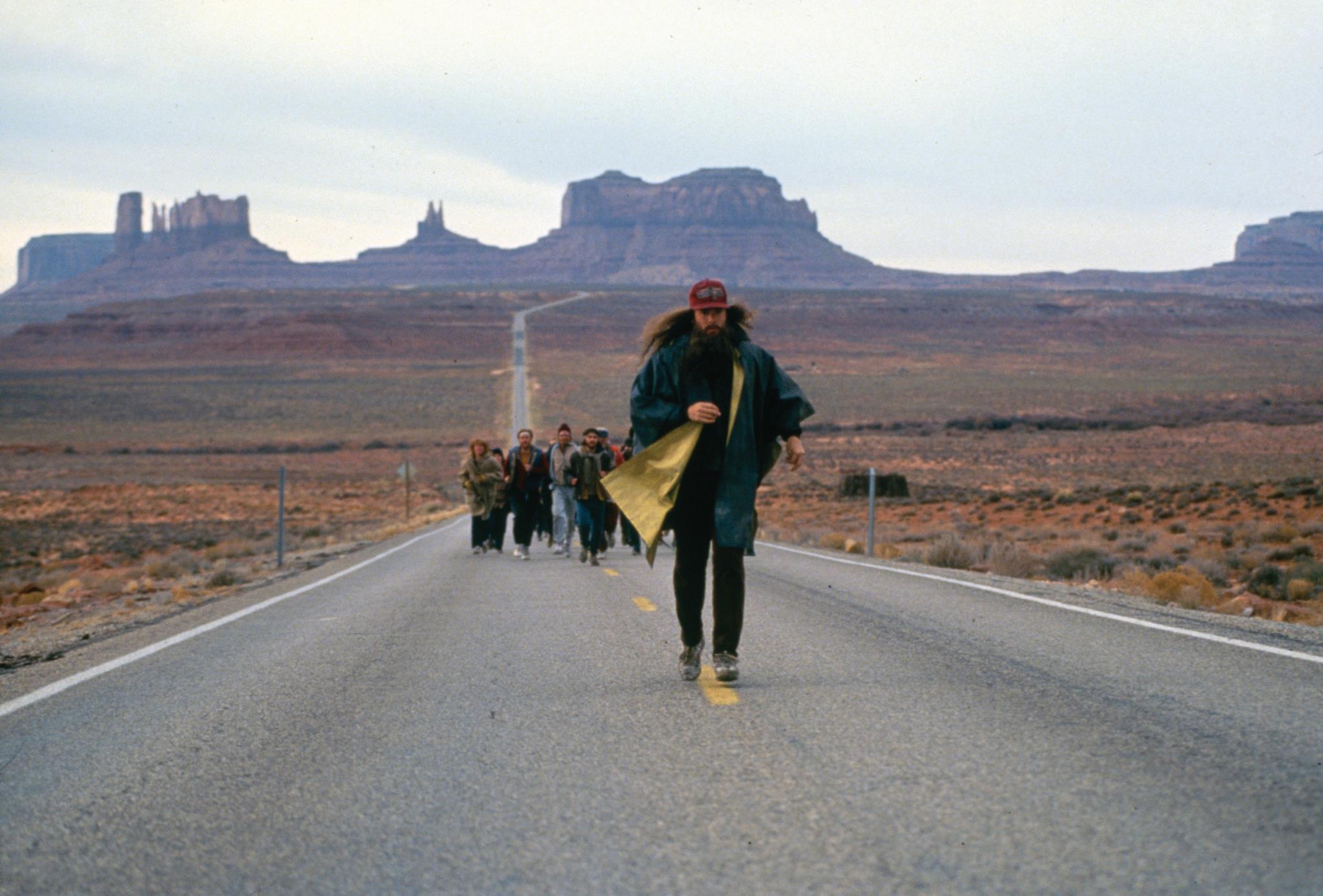

Forrest Gump is a classic. And while the 1994 film uses its eponymous main character as an accidental vanguard to some of the most defining moments in the second half of the 20th century, it is perhaps Forrest's epic, years-long run that sticks in our collective mind the most. It certainly sticks in my mind.
I'm a runner, you see, and this weekend I will attempt to run the New York City Marathon despite four months of injury-filled training.
Amid calf strains and ankle pain, I have often thought of Forrest. How could he possibly have run across the country several times with such apparent ease? I know, I know, he's a fictional character. But with the popularity of marathons and ultra-running (any race that is more than the distance of a marathon and can top out at 100 miles), I thought now would be as good a time as any to answer this burning question: Could anyone possibly do what Forrest Gump did?
The Week
Escape your echo chamber. Get the facts behind the news, plus analysis from multiple perspectives.

Sign up for The Week's Free Newsletters
From our morning news briefing to a weekly Good News Newsletter, get the best of The Week delivered directly to your inbox.
From our morning news briefing to a weekly Good News Newsletter, get the best of The Week delivered directly to your inbox.
To get to the bottom of this, I spoke to a variety of fitness and health experts, who helped me cover the following:
Still with me? Okay, first step, let's assess the facts. If you need a refresher, here' a clip from the movie.
Forrest is a natural athlete. While he did use crutches as a kid (likely corrective), we know him to be a strong runner from an early age. He goes on to play college football, fight in Vietnam, play professional ping-pong, and work a shrimp boat, all of which require a high level of physical activity.
Forrest embarks on his run wearing Nike running sneakers, khaki pants, a cotton button-down, and baseball cap. For at least the first leg, he wears only this outfit, though he is later seen in a number of get-ups, including running shorts, track pants, a windbreaker, and other warm clothes that would get him through colder temperatures.
A free daily email with the biggest news stories of the day – and the best features from TheWeek.com
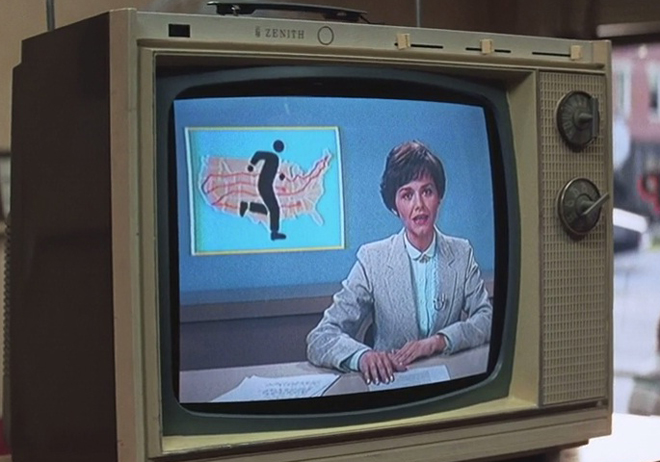
On his first day, Forrest runs past people watching a newscast reporting that President Jimmy Carter fainted from heat exhaustion while running a six-mile race. Given this information, we know that Forrest starts his run on or around October 1, 1979. Other key stats:
35
Forrest's age when he starts
1,169
Days Forrest runs (Or, as he put it, 3 years, 2 months, 14 days, 16 hours)
12,000
Miles (approximate) Forrest runs in the first two years, based on the above map, which I attempted to mimic in Google maps (see below or click here)
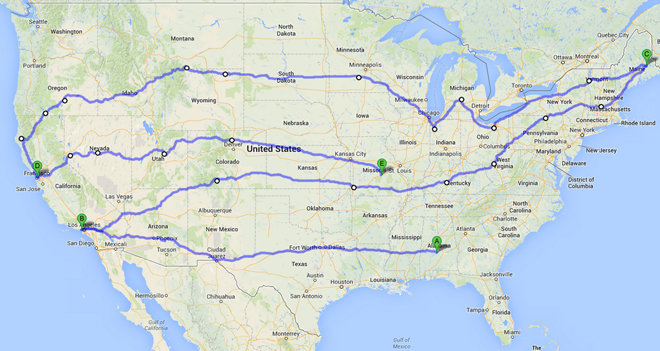
16
Average miles Forrest runs per day, based on my Google map calculations
19,024
Miles Forrest completes during his three-year run
Now, let me introduce you to my panel of experts:

Now, I wanted not only to know if such a feat would be possible but also to understand the mind-set of an ultra-ultra-ultra runner, what this kind of constant activity would do to the body, and what we normal runners can learn from such a fantastical, fictional journey.
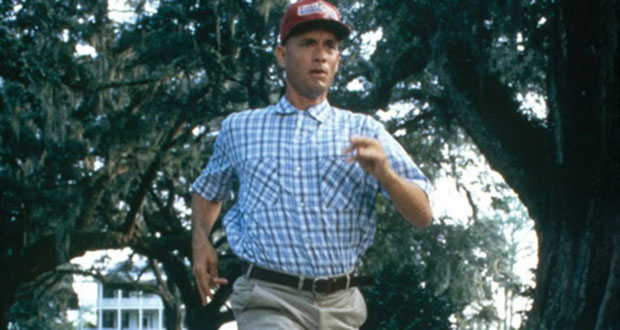
WHAT FORREST DOES RIGHT
1. He has perfect form
"He starts to run and my first thought is, 'F--k, this guy's got perfect form.' Tom Hanks is running beautifully. His back is straight, he's landing sort of mid-foot, he's driving forward with his knees, his arms are relaxed." — Chris McDougall
2. He chose the best shoes for his time
"Back in the day, the shoe he was wearing was a pretty good choice. The fact that a good amount of his running was a modest pace allows him to get some extra mileage out of his shoes and puts less wear and tear on his body." — Jon Teipen

"He's got the right shoes on. He's got minimalist footwear — those are the early Nikes with the zero drop differential between the heel and the toe, so I thought, 'Ah, nice choice of shoes.'" — Chris McDougall
3. He has the ideal mind-set
"Any advantage for Forrest would be that he doesn't have any goal. A lot of people who run trans-America races find some real hardships about two thirds of the way through. They realize, 'I've come 2,000 miles and I've still got 1,000 miles to go.' They now know how vast that is and what that takes out of them. But Forrest wouldn't have that weight on him. There's almost a lightness to it; no expectation to no goal.
"You have to train by doing while you are doing it. These people who are doing this 50-miles-a-day, you can't do that kind of training beforehand because you burn out. A couple of weeks into it you adapt to the rigors of the miles and the eating." — Bryon Powell

WHAT FORREST DOES WRONG
1. Running through hot and humid climates
"Just seeing him start in Alabama, he's running across some of the hot places in what looks to be the middle of summer and it's going to take its toll. The heat and humidity would be way harder in most cases than the cold. I never once saw him carrying any supplies. Just getting enough fluids to maintain, to not pass out and die during those long stretches in the desert and Southwest where there's no towns, that would be a stretch." — Bryon Powell
2. Horrible outfit choice and too few shoes
"It'd be really hard to run that far, comfortably, in a pair of khakis. The button-down is going to hold a ton of moisture, especially when he begins his run in Alabama. However, his red windbreaker seems to work pretty well and his Bubba Gump hat is clutch." — Gabriel Maricich
"If you average 300 miles per shoe, Forrest would need 33+ pairs of shoes to get to 10,000 miles. And his running gear is far from ideal. [His outfit] would have a huge impact on his comfort and enjoyment in regards to minimizing blisters, chafing, and overuse injuries. I would not recommend any part of Forrest's outfit for this type of adventure." — Jon Teipen

WHAT COULD BE HAPPENING TO HIS BODY
1. Foot problems
"Running that kind of distance for that kind of time, yeah, I'd think he'd develop some injuries. I wouldn't think he'd have any toenails left at that point. You're going to at least lose the big one, the second, and probably the little guy too."
"The other things that happen to you is the shredding on the joint and the structure. The moment of force that is occurring in each of the joints, you multiply that by body weight, and by the constant level of stress, and that's a lot of force on the feet. That much pressure and that much time, stress fractures, particularly in the metatarsus, the long bone in the foot, are really common. Usually it's a swelling in the forefoot that starts insidiously. That abnormal stress on a normal bone forces the bone to give way."
"But certainly almost without question he'd get some pretty nasty blisters, loss of one or more toenails, and most likely a stress fracture or two. And then, of course, any of the top five other lower extremity chronic injuries, common in runners, which are patella syndrome (achy pain behind the knee), iliotibial band syndrome, shin splints, isolated tendonitis, and plantar fasciitis (heel spurs)." — Dr. Isaacson
2. Bone issues
"Even with the best precautions, it's a repetitive activity, repetitive impact, and the chance of hitting significant setbacks is incredibly high."
"You worry about fractures, stress fractures, and the complete fractures where the bone literally snaps. You'd worry about the development of wear and tear in the joints, the knee probably the most, but probably the ankle and hip after that, in what eventually becomes arthritis. But just the repetitive impact on the cartilage in the joints would probably be next and then it's hard to say, there's so many different bones that could be affected. All the things that runners typically get generally get magnified at that level." — Dr. Geier
3. Mental withdrawal
"There are chemicals you release while running especially the mileage you run at this advanced stage. There would be a physical addiction to the running. He'd go through the withdrawal. He'd be let down." — Bryon Powell
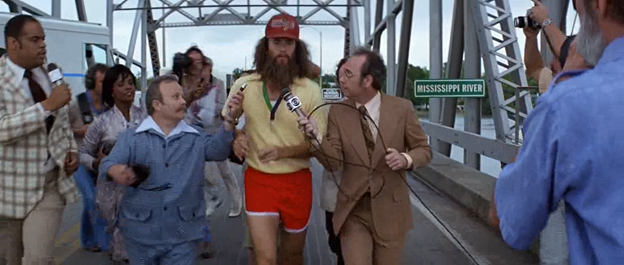
IS THE RUN POSSIBLE?
"Honestly, I don't see any major challenges to the do-ability. I would definitely say it's possible. It would definitely require an intense level of mental toughness and great conditioning and physical durability. — Gabriel Maricich
"If just casually running, this is very realistic. Forrest was pretty fit when he started. The first couple months would be very difficult as his body adapted to the new stresses on it. However, this would become quite easy for him as time went on." — Jon Teipen
"If you gave enough time to do it, I think it's conceivably doable. I think it'd be very daunting." — Dr. Geier
"It would be phenomenal, but I can't say that it would be impossible." — Bryon Powell
"Is it possible to run 10,000 miles? The answer is absolutely yes. If you were running back and forth across the country a bunch of times, absolutely yes, no problem. Especially the way he did it. He said, 'When I got tired I stopped; when I got hungry, I ate; when I had to you know, I did.' And that's exactly the way that humans evolved. Don't go to the point where you red line and collapse, which is the way that most people run today. The way that we're physically equipped is to surge-and-recover, go-rest-go-rest." — Chris McDougall
"I don't think there are a lot of people out there who have the endurance to run that many miles that many days in a row. For the most part you can always run a little more and you can always run a little bit better, but you have to be proud of the amount that you run. There are ultra marathoners that are running 60 miles or 100 miles and that's great, but for people running two miles or four miles, they're coming off of the couch and that's great too. You have to be proud of how much you run. You might not be a Forrest Gump, but you're you, and you have to be proud of that." — Dr. Isaacson
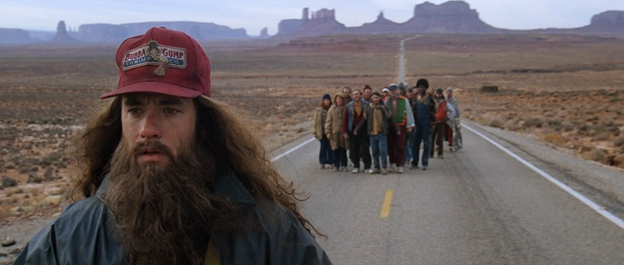
WHAT FORREST GUMP TEACHES US ABOUT RUNNING
"You watch the way Forrest Gump runs, right from the beginning the dude is effortless. How could that ever result in an injury?"
"For a lot of runners, it's all about the finish line, and that's completely wrong. You have to focus on the beginning. Focus on going easy because if that's all you get that's not so bad. And that's exactly what you get with Forrest Gump. There's no finish line, he's not running fast because he has no idea when the race is over."
"I don't think I have advice for anyone who wants to exactly replicate 10,000 miles in three years but I think I would definitely tell everyone to follow his approach. Everything he's doing apart from the extent of it is dead on the money. I have this theory that ultra running could be the salvation of recreational running. If you ran three miles the same way Forrest Gump runs 3,000 it's a much healthier approach. You're relaxed, you're enjoying it, you're surrounded by friends. If it's that instead of grunting out 30 minutes of misery on the treadmill we might be able to enjoy it more and it might be more prevalent and widespread." — Chris McDougall
Lauren Hansen produces The Week’s podcasts and videos and edits the photo blog, Captured. She also manages the production of the magazine's iPad app. A graduate of Kenyon College and Northwestern University, she previously worked at the BBC and Frontline. She knows a thing or two about pretty pictures and cute puppies, both of which she tweets about @mylaurenhansen.
-
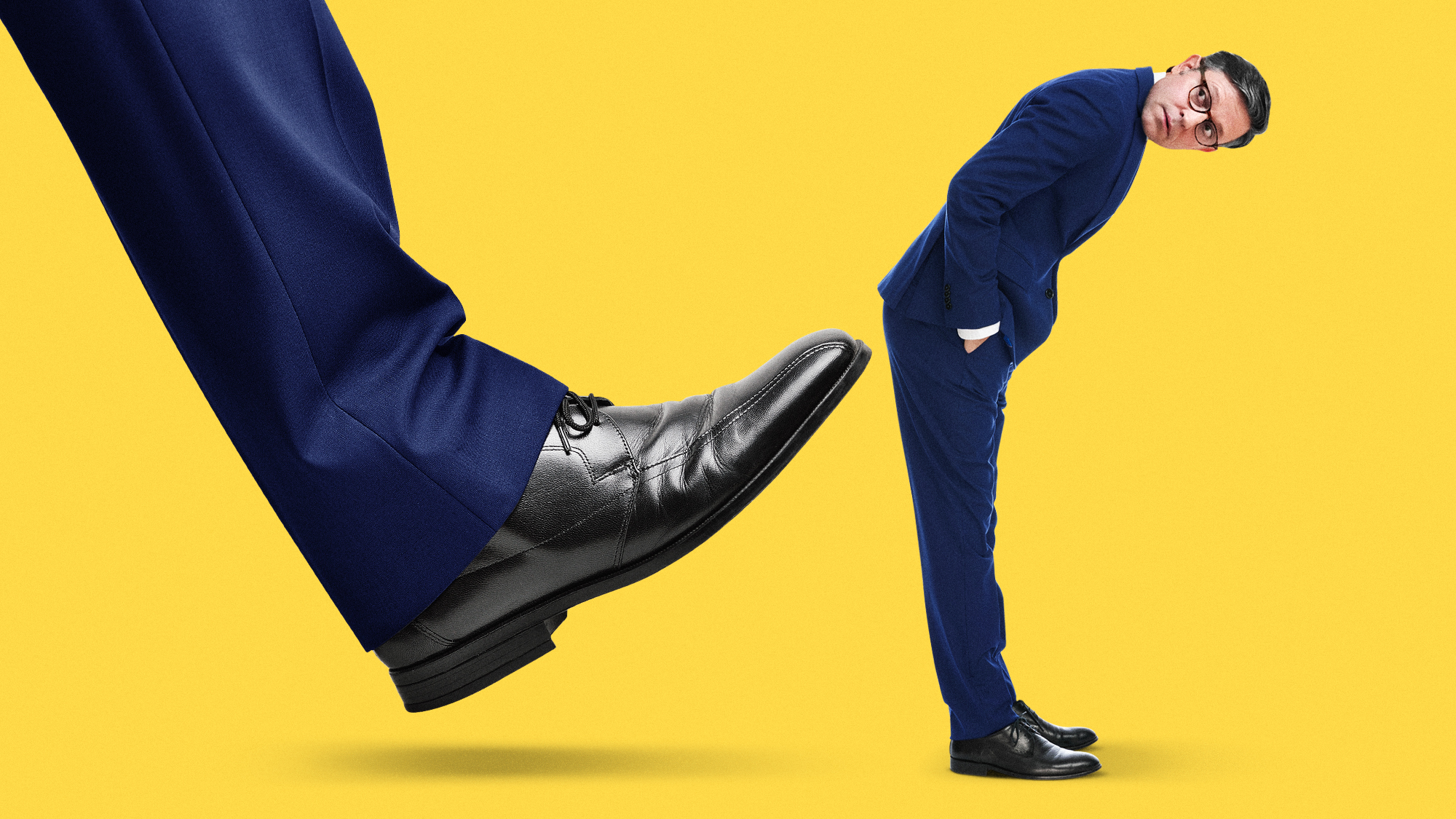 Can Mike Johnson keep his job?
Can Mike Johnson keep his job?Today's Big Question GOP women come after the House leader
-
 A postapocalyptic trip to Sin City, a peek inside Taylor Swift’s “Eras” tour, and an explicit hockey romance in December TV
A postapocalyptic trip to Sin City, a peek inside Taylor Swift’s “Eras” tour, and an explicit hockey romance in December TVthe week recommends This month’s new television releases include ‘Fallout,’ ‘Taylor Swift: The End Of An Era’ and ‘Heated Rivalry’
-
 ‘These accounts clearly are designed as a capitalist alternative’
‘These accounts clearly are designed as a capitalist alternative’Instant Opinion Opinion, comment and editorials of the day

